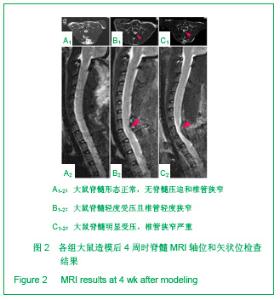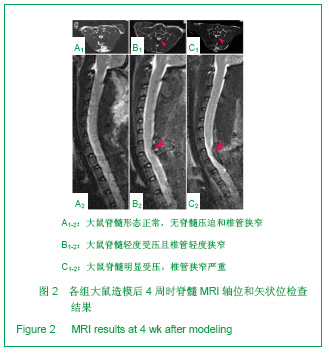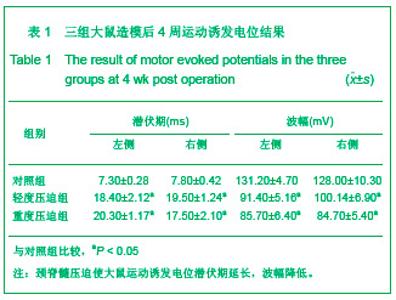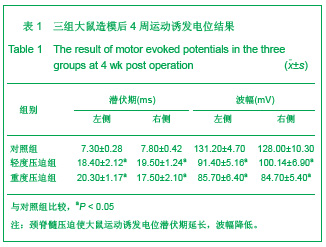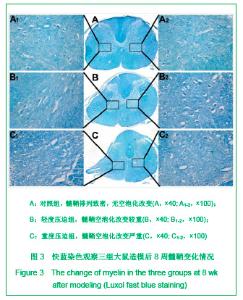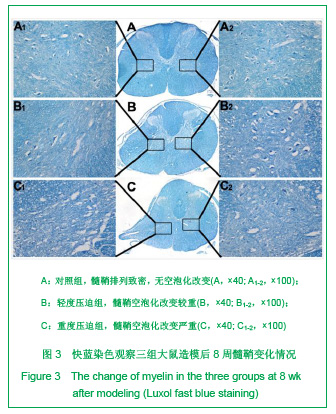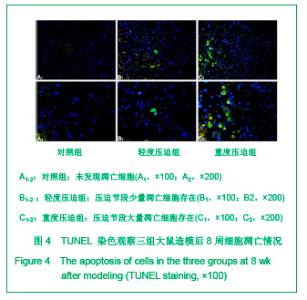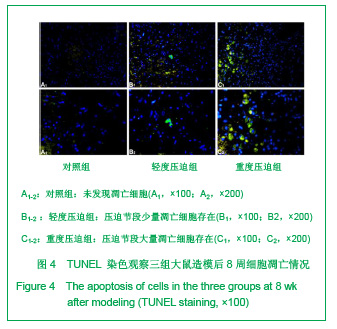| [1] Inukai T, Uchida K, Nakajima H, et al. Tumor necrosis factor-alpha and its receptors contribute to apoptosis of oligodendrocytes in the spinal Cord of Spinal Hyperostotic Mous (twy/twy) sustaining chronic mechanical compression. Spine. 2009;34(26):2848-2857.[2] Uchida K, Baba H, Maezawa Y, et al. Increased expression of neurotrophins and their receptors in the mechanically compressed spinal cord of the spinal hyperostotic mouse (twy/twy). Acta neuropathologica. 2003;106 (1): 29-36.[3] Yu WR, Baptiste DC, Liu T, et al. Molecular mechanisms of spinal cord dysfunction and cell death in the spinal hyperostotic mouse: implications for the pathophysiology of human cervical spondylotic myelopathy. Neurobiology of disease. 2009; 33(2):149-163.[4] Rong LM, Cai DZ, Wu JL. Zhongguo Linchuang Jiepouxue Zazhi. 2008;26(5):536-538. 戎利民,蔡道章,吴金浪. 慢性压迫性颈脊髓损害的超微结构观察[J]. 中国临床解剖学杂志,2008,26 (5): 536-538.[5] Zhang L, Zhao J, Zhu J, et al. Anisotropic tough poly(vinyl alcohol) hydrogels. Soft Matter. 2012; 8(40): 10439-10447.[6] Wang J,Rong W,Hu X,et al. Hyaluronan tetrasaccharide in the cerebrospinal fluid is associated with self-repair of rats after chronic spinal cord compression. Neuroscience. 2012; 210(3):467-480[7] Qian J, Sun ZY, Ma WH. Zhongguo Zuzhi Gongcheng Yanjiu yu Linchuang. 2010;14 (28): 5293-5296. 钱军,孙正义,马维虎.脊髓慢性损伤模型的构建[J]. 中国组织工程研究与临床康复,2010,14 (28): 5293-5296.[8] Ning B,Zhang A,Song H,et al. Recombinant human erythropoietin prevents motor neuron apoptosis in a rat model of cervical sub-acute spinal cord compression. Neuroscience letters. 2011; 490 (1): 57-62.[9] Manabe S, Tanaka H, Higo Y, et al. Experimental analysis of the spinal cord compressed by spinal metastasis. Spine. 1989; 14 (12): 1308-1315.[10] Kasahara K,Nakagawa T,Kubota T. Neuronal loss and expression of neurotrophic factors in a model of rat chronic compressive spinal cord injury. Spine. 2006;31(18): 2059-2066.[11] Kim P, Haisa T, Kawamoto T, et al. Delayed myelopathy induced by chronic compression in the rat spinal cord. Annals of neurology. 2004;55 (4): 503-511.[12] Long HQ, Wen CY, Hu Y, et al. Zhonghua Guke Zazhi. 2010; 30(4):427-432. 龙厚清,温春毅,胡勇,等. 慢性压迫性脊髓症研究平台的建立及体感诱发电位功能评价的机制[J]. 中华骨科杂志,2010,30 (4): 427-432.[13] Uchida K, Nakajima H, Inukai T, et al. Adenovirus-mediated retrograde transfer of neurotrophin-3 gene enhances survival of anterior horn neurons of twy/twy mice with chronic mechanical compression of the spinal cord. J Neurosci Res. 2008;86(8):1789-1800.[14] Yamaura I, Yone K, Nakahara S, et al. Mechanism of destructive pathologic changes in the spinal cord under chronic mechanical compression. Spine. 2002;27 (1):21-26. |
